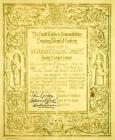Content can be downloaded for non-commercial purposes, such as for personal use or in educational resources.
For commercial purposes please contact the copyright holder directly.
Read more about the The Creative Archive Licence.
Description
Electric Cookers
The main thrust of electricity into rural Wales came after the Second World War and up to the early 1950s. Although the new clean and efficient electric cookers were available they were slow to replace the wall ovens, cast iron ranges, Agas, Rayburns and even the smelly paraffin stoves. Cost was a big factor in decision making.
1940s Revo Electric Cooker
During the 1930s and 40s manufacturers introduced easy and clean enamel surfaces together with efficient heating elements and thermostatic controls. At this time electric appliances became cheaper and hire purchase schemes made it possible for a large proportion of the population to benefit.
The “Baby Belling”
The Baby Belling hastened the change from coal to electric. Due to the cheapness of this model it became a popular piece of kitchen equipment.
In 1957 it cost about £8 10 shillings (£8.50).
Having familiarised themselves with these small cookers housewives gradually appreciated their advantages in comparison with the traditional oven.
Ultimately they bought larger more sophisticated models.
Some were simply reluctant to change to electricity:
“We had our farm wired in 1933. My parents left the farm in 1953 having not changed any of the cooking appliances. Mother still liked to do all the cooking on the iron range. She didn’t have an electric cooker, electricity did not change our diet. A good supply of cawl, bakestone cakes and teisen lap to the end.”
WFM ms. 3537/24
The South Wales Electricity Board employed qualified ladies as ‘demonstrators’ to encourage the purchase of new electric cookers. One such demonstrator who worked in the Lampeter/ Tregaron area in 1949 remembers:
“It was my duty to produce appetising dishes, and keep-up a high standard of cooking, and also to produce ‘sales-talk’. It was important to sell hard at a terrific pace, holding demonstrations and exhibitions at whatever village which had been connected with electricity, usually in schools or village halls. The drive was on!”
WFM3537/10






Do you have information to add to this item? Please leave a comment
Comments (0)
You must be logged in to leave a comment